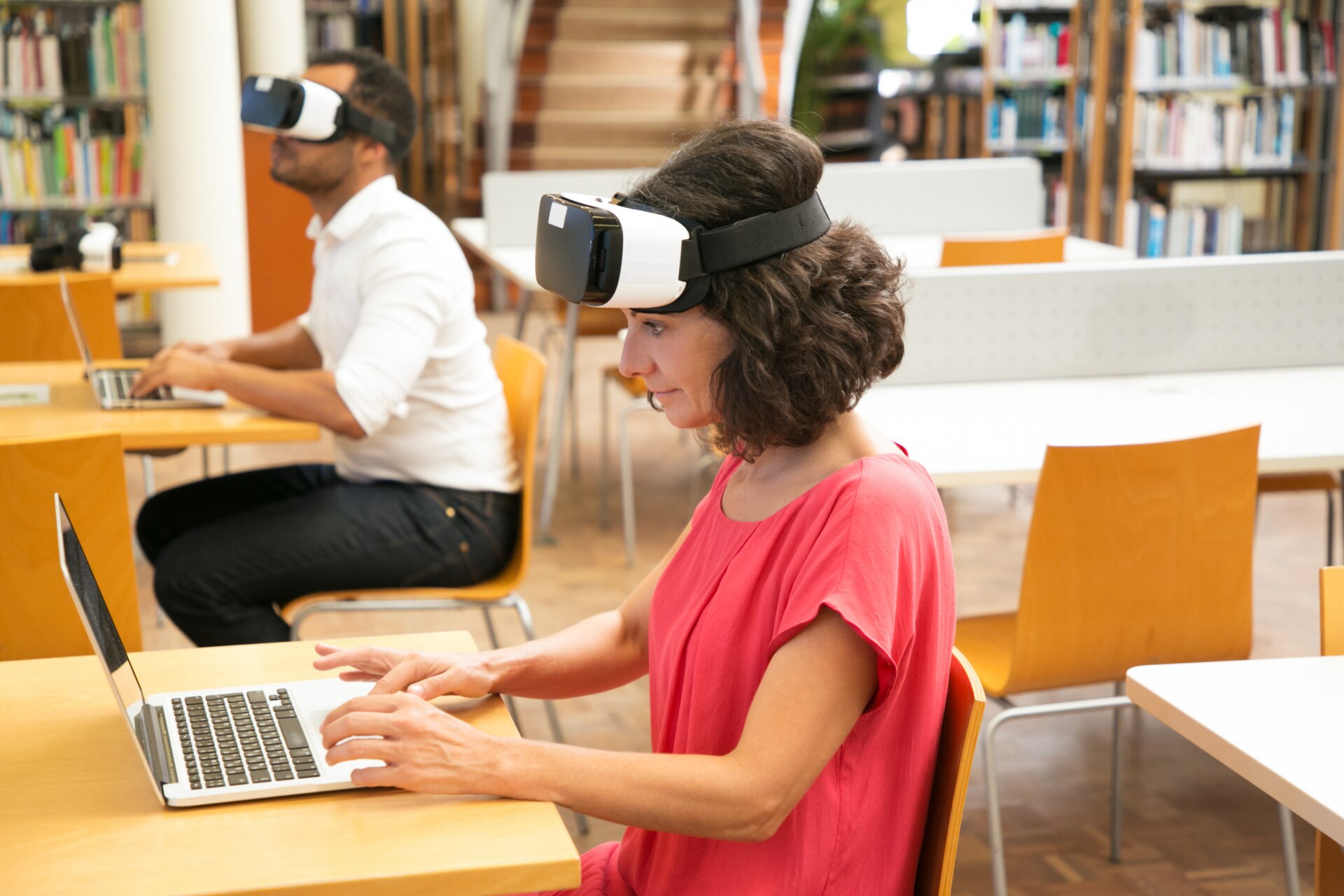In today’s rapidly evolving world, the realm of education is undergoing a profound transformation. Universities, once characterized by traditional lecture halls and physical textbooks, are now embracing a new era defined by technological advancements. The future of education is being shaped by innovative technological trends that are revolutionizing how students learn, interact, and engage with academic content. In this article, we will explore the key technological trends that are driving the future of education in universities.
1. Digital Learning Platforms: Expanding Access and Flexibility
Digital learning platforms have emerged as one of the most significant technological trends in education. These platforms offer a wide range of online courses, enabling students to access educational content from the comfort of their homes. Universities are increasingly incorporating digital learning into their curriculum, allowing students to customize their learning experiences and study at their own pace. This trend not only expands access to education but also promotes flexibility for both traditional and non-traditional students.

2. Virtual Reality (VR) and Augmented Reality (AR): Transforming Learning Environments
Virtual Reality (VR) and Augmented Reality (AR) technologies are transforming the way students engage with course material. These immersive technologies create interactive and realistic learning environments that enhance understanding and retention. For instance, medical students can practice surgical procedures in a virtual setting, while history students can virtually explore ancient civilizations. By bridging the gap between theoretical knowledge and real-world application, VR and AR are reshaping the educational experience.
3. Artificial Intelligence (AI) and Personalized Learning
Artificial Intelligence (AI) is making its mark on education through personalized learning experiences. AI algorithms analyze students’ learning patterns and behaviors to tailor educational content to their individual needs. This approach ensures that students receive targeted support, allowing them to focus on areas where they need improvement. AI-powered chatbots also provide instant assistance, enhancing student engagement and support outside of traditional classroom hours.
4. Online Collaborative Tools: Fostering Interaction and Communication
Collaborative tools and platforms are promoting interaction and communication among students and instructors. Online discussion boards, group projects, and video conferencing enable students to collaborate irrespective of their geographical locations. These tools mimic real-world teamwork experiences, preparing students for collaborative work environments in their future careers.
5. Blockchain Technology: Ensuring Credential Security
Blockchain technology is revolutionizing the way educational credentials are stored and verified. With blockchain, universities can issue secure digital certificates and degrees that are tamper-proof and easily accessible by employers and other institutions. This technology streamlines the credential verification process, reducing the risk of fraudulent documents and ensuring the authenticity of academic achievements.
6. Gamification of Learning: Enhancing Engagement
Gamification involves integrating game elements into educational content to enhance engagement and motivation. Interactive quizzes, competitions, and rewards transform learning into an engaging and enjoyable experience. Gamified learning encourages healthy competition, active participation, and a deeper understanding of complex concepts.
7. Cloud Computing: Accessing Resources Anytime, Anywhere
Cloud computing is facilitating seamless access to educational resources. Students can store and retrieve assignments, projects, and research materials on cloud platforms, eliminating the need for physical storage devices. Cloud-based collaboration tools also enable real-time collaboration on documents and presentations, making group work more efficient.
8. Data Analytics and Learning Analytics: Improving Educational Outcomes
Data analytics and learning analytics tools analyze student performance data to identify trends and patterns. Educators can use these insights to tailor teaching strategies, interventions, and support mechanisms to enhance learning outcomes. Learning analytics also empower students with self-assessment tools that help them track their progress and make informed decisions about their studies.
9. Remote Proctoring and Online Assessments
With the rise of online learning, the need for remote proctoring and secure online assessments has become paramount. Technological solutions such as AI-powered proctoring tools and plagiarism detectors maintain the integrity of online exams and assignments. These tools ensure that academic evaluations remain fair and unbiased.
10. Internet of Things (IoT) in Education
The Internet of Things (IoT) is making its presence felt in education through smart classrooms and connected devices. IoT-enabled sensors and devices enhance classroom interactivity by providing real-time data on students’ engagement levels and learning preferences. Smart classrooms equipped with IoT technology create a dynamic and data-rich learning environment.
In conclusion, the future of education in universities is being reshaped by an array of technological trends. From digital learning platforms to virtual reality, AI, and blockchain technology, these trends are enhancing accessibility, engagement, and customization in education. As universities continue to embrace these innovations, students and educators alike are poised to benefit from an enriched and transformative learning experience. The key to success in this new era lies in harnessing the potential of technology to empower learners and educators on their educational journey.

